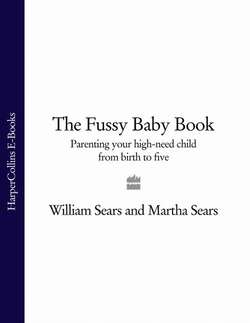Читать книгу The Fussy Baby Book: Parenting your high-need child from birth to five - Martha Sears - Страница 33
feeds frequently
ОглавлениеYou will soon learn that feeding is not only a source of nutrition, but also an easy tool for comforting, not only because the skin-to-skin contact makes the breast a nice place to nestle, but also because the baby can easily regulate the flow of milk. Studies show that babies who are fed frequently, as needed, cry less than infants who are fed on a more rigid, parent-controlled schedule. In cultures in which babies rarely cry, as documented, for example, in Liedloff’s The Continuum Concept, infants usually breast-feed twenty or so times a day. Researchers have attributed the mellowness of the babies in these “higher” cultures to the effect frequent feeding has on the overall organizing of the baby’s biological systems. This number of feedings sounds incredible to us in our Western culture, but it’s really not so strange when you consider that in these cultures baby is worn on the mother’s body in such a way that he has easy access to the breast. A feeding in this case may last only five minutes, rather than the thirty to forty-five minutes a baby takes to fill his tummy when fed only six or eight times a day in a more controlled feeding arrangement.
